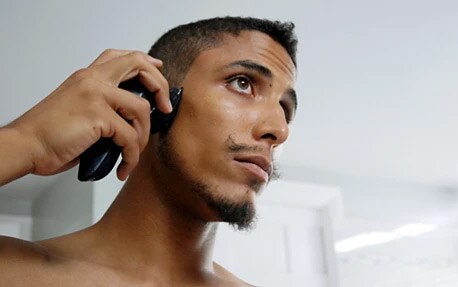All the different beard styles for men – and what to call them

Discover the beard styles in vogue now.
Beards have been objects of fascination for men and their admirers for centuries, if not since the human race began. There's just something about them. Beards seem to say so much about the wearer – their tastes, their values and simply the kind of person they are. So it's no surprise that we are, and will probably always be, intrigued by the various different styles of beards available to us.
Ready to experiment? Assuming you can grow enough hair to play around with, here are some beard styles you might like to try.
Our rundown of beard styles for men:

The full beard
The father of all the different beard styles below, the full beard brings full sideburns, a mustache and a beard together to form an all-in-one magnificent display of manliness. By shaving your upper cheeks and neck and trimming the rest, you can define the shape and keep the whole thing tidy. A classic beard look.
Neatly trimmed, the full beard might be one of the best all-round beard styles. Showing a certain class and restraint, this is a beard you can wear to work each day without causing much of a fuss. You won't look like a full-on Neanderthal, but this beard still radiates a certain timelessly-rugged look.
Suits: As it works with your natural hair growth, a full beard will probably suit you irrespective of the shape of your face. Find out how to get the full beard look here.

The scruffy beard
The key to a confident cool look, the scruffy beard sits somewhere between the full beard and light stubble, giving you the air of a man with something far better to do that spend time grooming. And truth be told, it doesn’t take more than a few minutes to maintain, making it one of the most low-maintenance beard styles. Just remember to trim it once in a while. Otherwise, before you know it, the scruffy beard will have evolved into a somewhat grizzled full beard.
Suits: The scruffy beard is reasonably kind to anyone who can get consistent all-over beard growth. Its mid-length makes it hard to conceal patchiness. Find out how to get a scruffy beard here.

The Balbo beard
Sophisticated and elegant, this cultivated beard requires commitment. Bringing together a handlebar mustache, a soul patch, and a chin strap, the important thing to remember about the Balbo is that the mustache should never touch the beard. Otherwise, you have a circle beard on your hands (although some would argue that the circle beard is a goatee).
Suits: The Balbo beard can be used to strengthen a weak jaw, and looks good (and suitably historical) on those with narrow faces.
See more below ↓
What you need

- -{discount-value}
Philips Norelco Beard trimmer 9000 Prestige Beard trimmer
BT9810/40
Ultimate steel precision for the perfect beard
The Philips Norelco BT9000 Prestige delivers unmatched precision thanks to the built-in metal comb, giving consistent trimming results no matter how much pressure applied.
See all benefits
The stiletto beard
Rounded at the sides and perfectly pointed at the end, the stiletto beard is one of the tougher beard styles to achieve – but it looks great when combined with short hair. It isn't the most common of beards either, but then, with two months of growth required to achieve it, that might not be too big a surprise.
The stiletto beard can be recognized by the central point at which the wearer's chin hair concludes, but it's easy to underestimate the work that goes into creating this style – such as the two deep 'U' shapes that you will also need to trim under your mouth in order to draw the eyes downwards.
Suits: The stiletto beard is a good counter-balance to round faces, and amps the jawline for those of us with square faces. If you have an oval or long face, beware the lengthening – you’ll want to go for beard types and styles that add more width to your jaw.

The chin strap or brett beard
These two types of beard styles are closely related. The chin strap provides a strip of beard along the jawline, while the brett beard adds a soul patch to connect that beard to the lower lip. Both demand precision and a certain level of dedication: these are not low maintenance beards. The chin strap saw its greatest peak in the 90s, but it’s still worn by those who know that their defined jawline deserves adornment.
Suits: Square and diamond faces, with clear jaw definition: the chin strap and the brett beard rely on you following the natural jawline (and can’t be used to substitute for one). Find out how to get a chin strap here.

The Van Dyke beard
Named for the 17th Century Flemish painter Anthony van Dyck, this beard has flourished on the chins of kings and emperors for decades. Since then, you’ve seen it on Johnny Depp and Christian Bale, speaking to a certain period-costume elegance. The Balbo’s more refined older brother, it combines a pointed goatee with a natural mustache that droops only slightly below the lips.
Suits: Kind to those with patchy beard growth, the Van Dyke also adds definition to a round face. Find out how to master the Van Dyke here.













